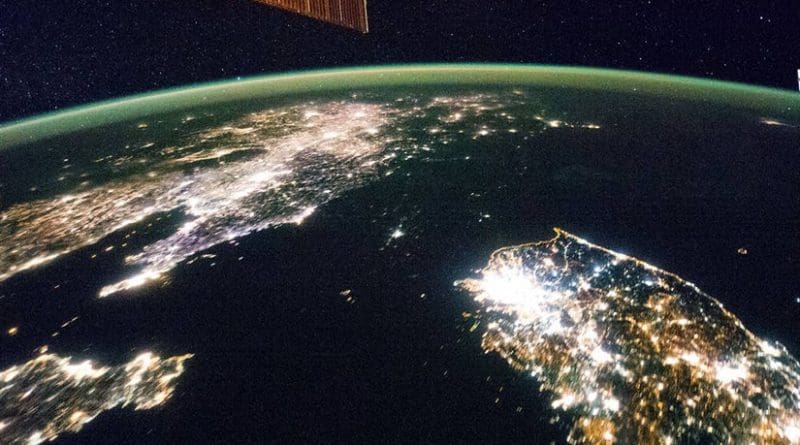North Korea Diverts Electricity From Provinces To Keep Pyongyang Powered
By RFA
People living in North Korea’s rural areas have been forced to stumble in the dark without electricity after authorities re-routed power to keep the capital Pyongyang connected 24 hours a day, sources in the country told RFA.
North Korea has been unable to generate enough electricity for its needs for decades, and not even the capital – home to the most loyal and trusted citizens — was immune to rolling blackouts.
Last month, however, Pyongyang began supplying electricity to homes around the clock, according to sources.
But the newfound abundance of power in Pyongyang has come at the expense of the people in the provinces, who must now endure long stretches without electricity.
“Since Chagang province has abundant water resources and is a military industrial district, we’ve never had electricity shortages, even during the Arduous March,” said a resident of the northern province’s Chunggang county, referring to the 1994-1998 famine that killed millions.
“We have a new medium-sized hydroelectric power plant here in Chunggang. When they were building it in 2018, they submitted reports to the party saying it could generate enough electricity for the whole county, but that turned out to be false. That’s why there’s a stoppage from the national electricity supply to the county,” the resident told RFA’s Korean Service Monday, asking for anonymity for security reasons.
The residents of Chunggang sacrificed much to build the power plant, according to the resident.
“It took 20 years of labor. We carried cement on our backs and blocked off the streams, but the plant only worked for the first few years before it stopped generating power,” the resident said.
“At the time the power plant was completed, they lifted restrictions on electricity use and every household in the town of Chunggang received a gift of an electric rice cooker from the Highest Dignity,” said the resident, using an honorific to refer to North Korean leader Kim Jong Un.
The opening of the power plant and the gifts were touted as an example of Kim’s benevolence and love for the people, according to the resident.
“But it was the start of our suffering. It was already bad that corrupt officials submitted a false report to exaggerate their own achievements, but it was worse that the guy at the top is so ignorant of how we at the bottom are living, and he is only concerned about taking credit for everything,” said the resident.
As electricity is often unavailable in the people’s homes, the people have begun finding creative ways to access reliable power.
“Last month at the Chunggang County Youth Mine, the mine supervisor caught a worker leaving the mine while carrying a suspicious package very early in the morning. He thought she might be stealing something from work, so he made her open the package to see what was inside,” the resident said.
“To his surprise, he found her rice cooker. What had happened was that she came to work very early in the morning with the rice cooker because there was no power at her house. She had made a pot of rice and corn for breakfast and was returning home,” said the resident.
Residents outside of the major cities are mobilized many times per year for free farming work or labor for government projects. The resident said authorities are using the current mobilization period—when almost no one is at home during the day—as justification for the energy shortages in the countryside while Pyongyang is fully powered.
“There are some government officials and rich people out here who can bribe the officials at the power station or the factories to steal electricity by attaching their individual power line to the plant’s,” the resident said.
Another source, a high-ranking official in the nearby city of Manpo, who requested anonymity to speak freely, confirmed to RFA that Pyongyang was sucking all the power out of Chagang province.
“With all the water resources in Chagang and several power plants, we used to be self-sufficient,” the former official said.
“But electricity supply has become more of a severe issue out here in Chagang province due to Pyongyang’s increasing demand since 2016, when they built Ryomyong Street,” said the official.
The residential Ryomyong Street section of the capital includes a 70-storey skyscraper and was touted by authorities as an example of North Korea’s rapid economic development when it was finished in 2017.
“Since the Ministry of the Central Electric Power Industry introduced a complete electricity distribution management system in 2015, the electricity supply in Chagang province made a turn for the worse,” the official said.
The new system will automatically shut off electricity to an entire province if consumption exceeds its quota, according to the second source.
“Even the electricity produced in the province itself would be taken away by the central government and the people end up living in total darkness,” the official said.
Now as Pyongyang is trying to deliver on Kim Jong Un’s recent promise to alleviate the city’s housing shortage with 50,000 new homes by 2025, including 10,000 by the end of this year, the central government is rerouting all power across the country to the capital so that construction can continue around the clock, the official said.
“Pyongyang people are living a very extravagant life with their houses on well-lit streets while the residents of the provinces don’t even have enough juice to cook a measly pot of corn-rice, to say nothing of lights.”
RFA reported May 31 that Pyongyang residents were concerned that the city’s residential areas were getting continuous power only because the city’s factories and businesses were closed due to poor economic conditions.
“I don’t know whether to laugh or cry because we have 24/7 electricity in exchange for so many factories shutting down,” the Pyongyang resident said.
Reported by Yong Gun Shin and Jeong Yon Park for RFA’s Korean Service. Translated by Jinha Shin. Written in English by Eugene Whong.

